When you’re pulling up an anchor or a crab pot, you’ll get a better purchase on the line if you get up next to the rail, but putting your weight so far off center in a small boat might bring the gunwale uncomfortably close to the water. The alternative is to sit in the middle of the boat to keep it on an even keel, drag the line over the gunwale, and wear through the paint or varnish.
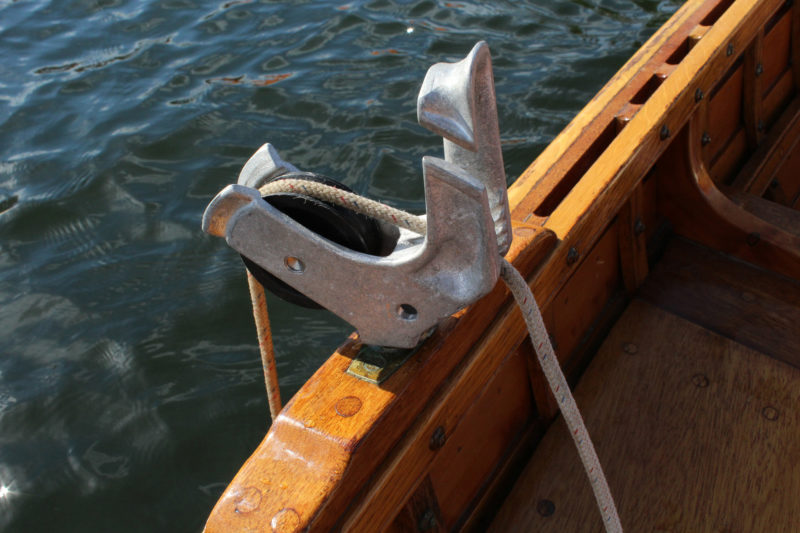 both photos by the author
both photos by the authorThe Pocket Puller holds line clear of the gunwale, preserving the finish. The fairlead and jam cleat allow for one-handed operation.
The Pocket Puller is a device for pulling anchors and pots back aboard small boats. It’s made of cast aluminum and fits in a standard 1/2″ rowlock. I’ve only used the Pocket Puller in the rowlocks that I have for rowing, but you could install another socket specifically for the Pocket Puller anywhere on the boat. A nylon sheave on a stainless-steel axle brings the line turn the corner outboard so it’s not scarring the rail or bringing lot of water aboard. Inboard the Pocket Puller has a fairlead and jam cleat that takes line from 1/4″ to 1/2″. A diagonal slot in the side lets you slip a line into the fairlead and keeps it captured there when it’s under tension.
The Pocket Puller is especially handy if you’re repeatedly changing where you’re setting your anchor, whether scouting for good fishing holes or finding good holding ground in an anchorage. You can pull the anchor up and let the jam cleat hold it over the side while you row to a new spot. You don’t have to leave the rowing thwart to tend to the anchor each time.

Although not designed to handle chain, the Pocket Puller works with links no wider than 13/16″.
While the Pocket Puller is meant for cordage, I found it also worked for my anchor chain. It’s 3/16″ chain, with links 13/16″ wide. The outside edges of the wings that guide line and chain into the sheave often caught on the links, so I filed the corners off and now the chain rattles through without a snag; it even holds in the jam cleat and slips through the slot in the side of the Pocket Puller.
The Pocket Puller will bring the line up about 2-1/2″ from the rowlock socket; if you need more clearance, there is an extension arm that provides 8″ of reach, which will help keep pots and anchors from running into the hull as they reach the surface.![]()
Christopher Cunningham is the editor of Small Boats Monthly
The Pocket Puller is made by Thomas Machine & Foundry in Marysville, Washington, and sold by Gig Harbor Boat Works ($49), Spring Creek Prams ($55), LFS Marine & Outdoors ($38.25), Fisheries Supply ($51.20),and Bargain Boats ($49.26).
Is there a product that might be useful for boatbuilding, cruising or shore-side camping that you’d like us to review? Please email your suggestions.
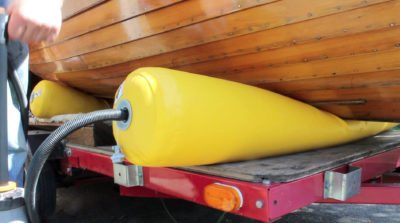
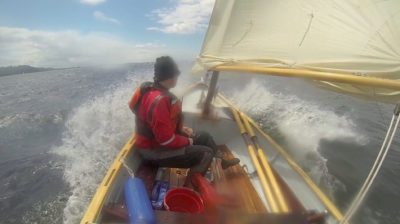
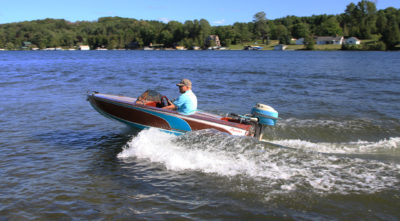
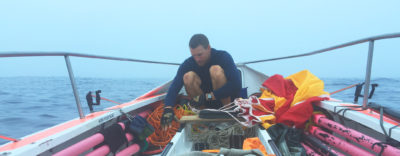
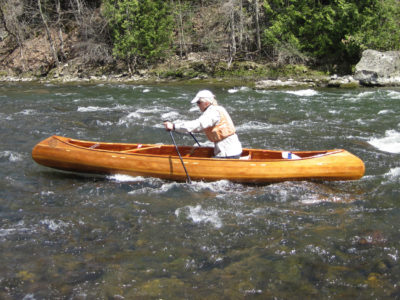
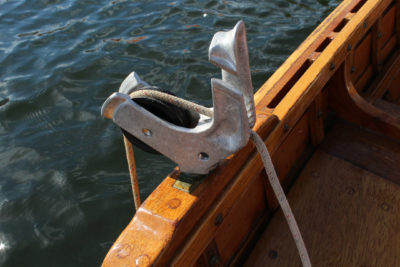
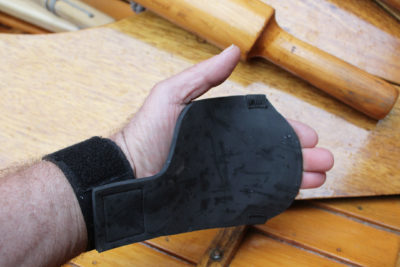

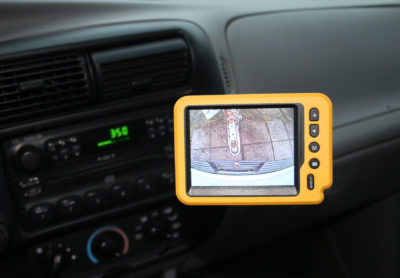

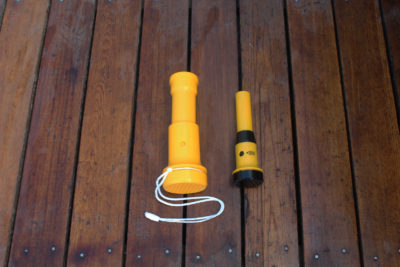
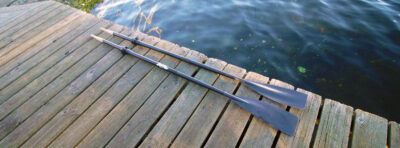
The Pocket Puller looks like a great device, and I will be buying one, but a word of caution: Securing an anchor line amidship on a small boat can lead to a capsize. Several years ago two people died on the Connecticut River when an underwater snag caught their anchor line, pulled the gunwale under and rolled their canoe.
Quite true. Even if you have the rode secured to the bow while you’re at anchor, hauling the anchor aboard from amidships in a current is quite dangerous. One night almost 30 years ago I had anchored a narrow, in what seemed to be a quiet passage between islands near the mouth of the Skeena River. We had arrived in the dark on a high tide and there was no current running, but in the middle of the night I could hear the anchor rattling. The ebb alone wouldn’t have caused much of a current, but it pulled the river flow with it and we were sitting in a current running about 4 knots. I didn’t trust the anchor to hold, so it was time to leave. I took the rode from the bow and brought it amidships, as I had always done to haul it aboard, and the bow veered sharply away, bringing the boat broadside the the current. Fortunately, the anchor broke free before the boat capsized.
Brilliant! As I am “the winch” in a 12′ dinghy and my buddy and I fish in 30 to 40 meter water, this will save the back.